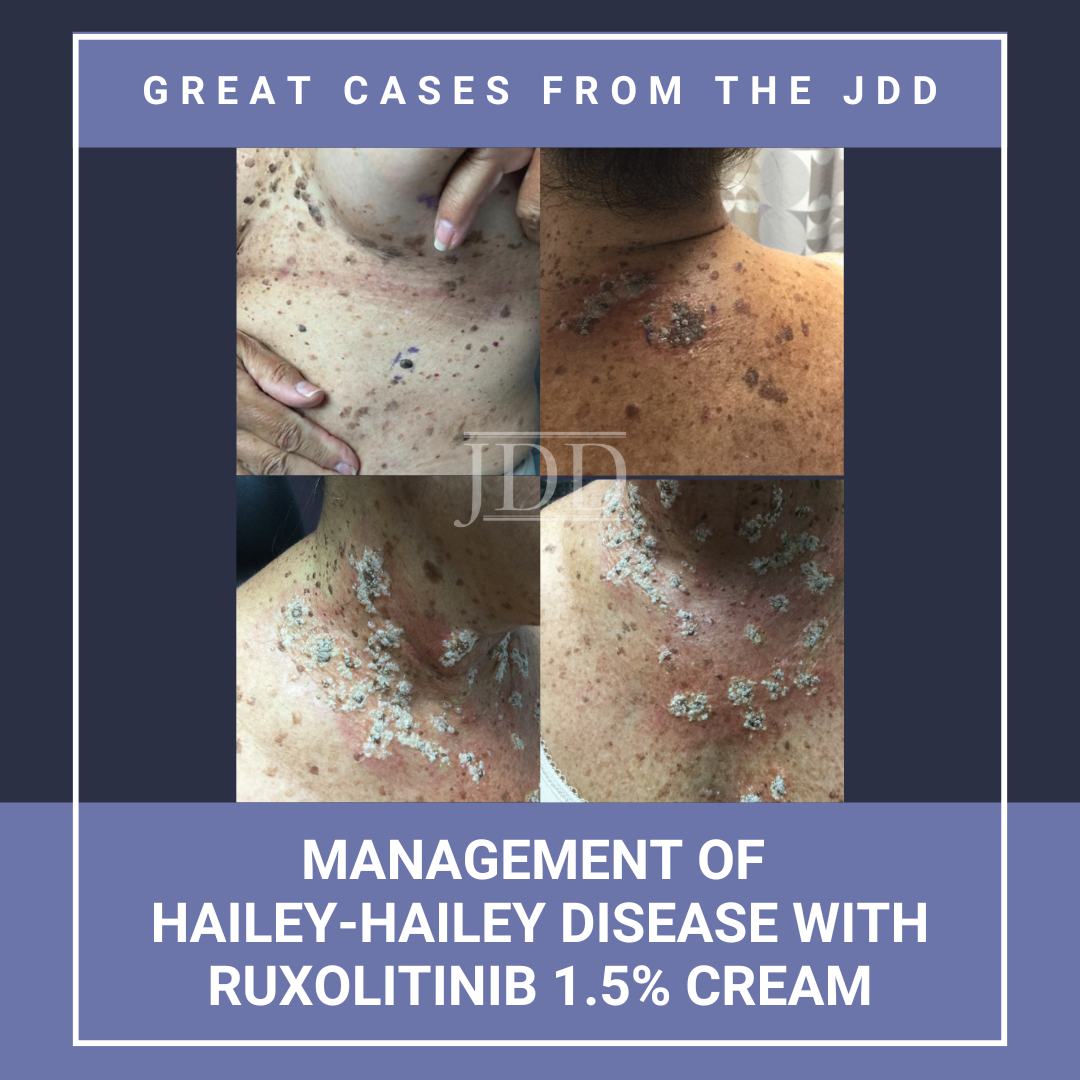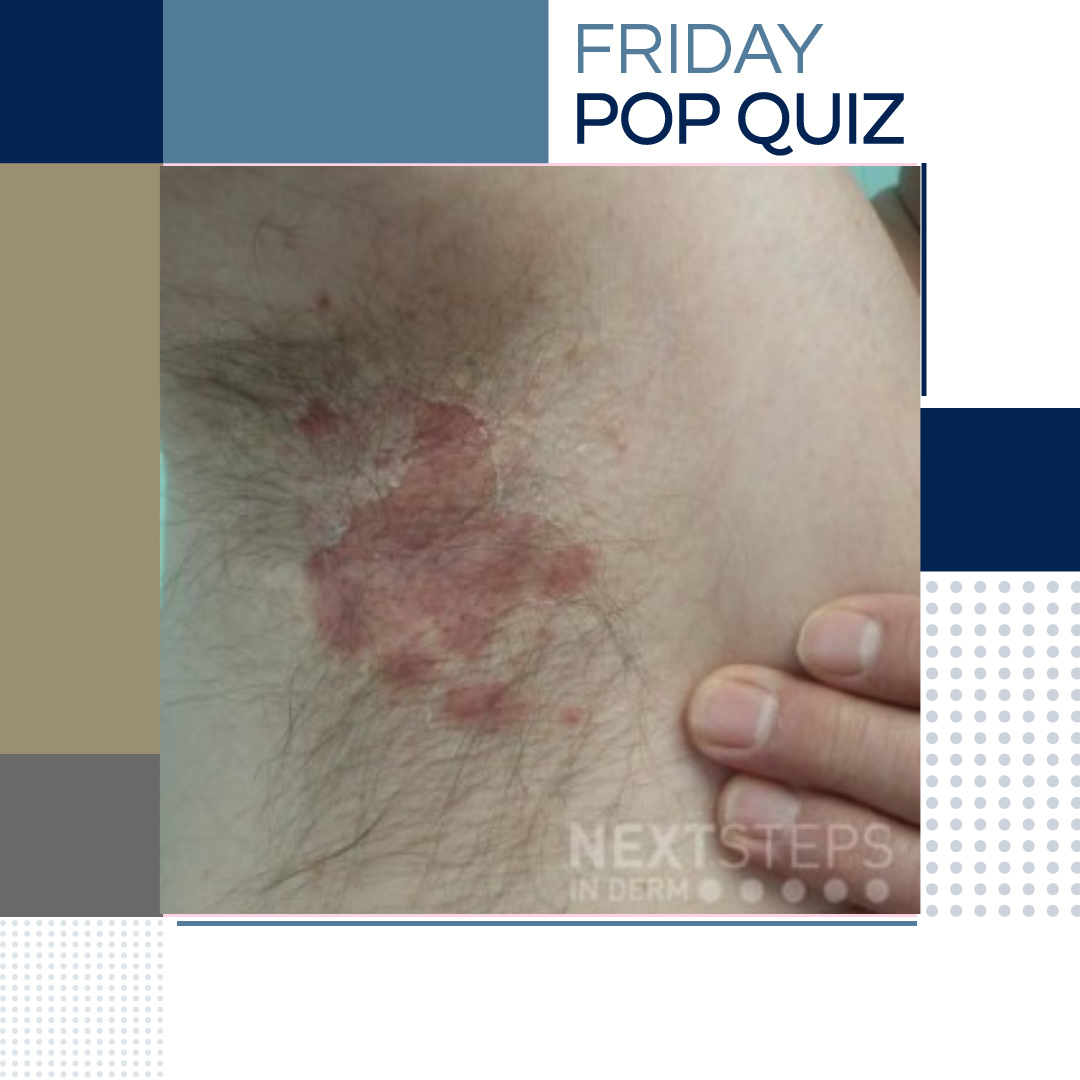Management of Hailey-Hailey Disease With Ruxolitinib 1.5% Cream
 Introduction
Benign Familial Pemphigus (Hailey-Hailey Disease [HHD]) is caused by a mutation within ATP2C1, the gene encoding the calcium pump of golgi apparatuses, impacting keratinocytes' ability to adhere to each other, resulting in acantholysis.1 Clinical presentation of HHD encompasses blisters that become erythematous plaques and fissures within flexural areas on a relapsing basis …
Introduction
Benign Familial Pemphigus (Hailey-Hailey Disease [HHD]) is caused by a mutation within ATP2C1, the gene encoding the calcium pump of golgi apparatuses, impacting keratinocytes' ability to adhere to each other, resulting in acantholysis.1 Clinical presentation of HHD encompasses blisters that become erythematous plaques and fissures within flexural areas on a relapsing basis …
 Introduction
Benign Familial Pemphigus (Hailey-Hailey Disease [HHD]) is caused by a mutation within ATP2C1, the gene encoding the calcium pump of golgi apparatuses, impacting keratinocytes' ability to adhere to each other, resulting in acantholysis.1 Clinical presentation of HHD encompasses blisters that become erythematous plaques and fissures within flexural areas on a relapsing basis …
Introduction
Benign Familial Pemphigus (Hailey-Hailey Disease [HHD]) is caused by a mutation within ATP2C1, the gene encoding the calcium pump of golgi apparatuses, impacting keratinocytes' ability to adhere to each other, resulting in acantholysis.1 Clinical presentation of HHD encompasses blisters that become erythematous plaques and fissures within flexural areas on a relapsing basis … Continue reading "Management of Hailey-Hailey Disease With Ruxolitinib 1.5% Cream"


 What is the underlying defect for the disease shown in picture is?
A. ATP2A2
B. ATP2C1
C. BPAG1
D. BPAG2
E. Collagen type 17
To find out the correct answer and read the explanation, click here. …
What is the underlying defect for the disease shown in picture is?
A. ATP2A2
B. ATP2C1
C. BPAG1
D. BPAG2
E. Collagen type 17
To find out the correct answer and read the explanation, click here. …  INTRODUCTION
Benign Familial Pemphigus, or Hailey-Hailey Disease (HHD), affects intertriginous areas of the skin causing epidermal blistering and vesicles that coalesce into weeping and crusting plaques.¹
The loss-of-function mutation of the ATP2C1 gene causes a disruption in calcium homeostasis of keratinocytes. The resulting dysfunction in desmosomes and cell-cell adhesion causes acanthol …
INTRODUCTION
Benign Familial Pemphigus, or Hailey-Hailey Disease (HHD), affects intertriginous areas of the skin causing epidermal blistering and vesicles that coalesce into weeping and crusting plaques.¹
The loss-of-function mutation of the ATP2C1 gene causes a disruption in calcium homeostasis of keratinocytes. The resulting dysfunction in desmosomes and cell-cell adhesion causes acanthol …  The April issue of the Journal of Drugs in Dermatology (JDD) includes the perfect blend of original articles, features, and case reports, with topics ranging from hormonal therapy in hidradenitis suppurativa, private equity in dermatology, vitiligo and its associated comorbidities, novel topical products for facial dyschromia, and many more. Check out this month’s issue highlights straight …
The April issue of the Journal of Drugs in Dermatology (JDD) includes the perfect blend of original articles, features, and case reports, with topics ranging from hormonal therapy in hidradenitis suppurativa, private equity in dermatology, vitiligo and its associated comorbidities, novel topical products for facial dyschromia, and many more. Check out this month’s issue highlights straight …